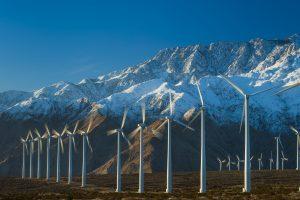Green Building Community
How California is charting a path forward on Clean Energy
Posted by: Kalyani.rc // Passive House / Sustainability Enthusiast

The late California historian Kevin Starr once wrote, “California had long since become one of the prisms through which the American people, for better and for worse, could glimpse their future.” These words have never felt truer.
California is the sixth largest economy in the world and the most populous state in the nation. What’s more, they’ve shown that strong climate and energy policy is possible while building a dynamic economy. They’ve proved that clean energy creates far more jobs than fossil fuels – nationwide, more than 400,000, compared with 50,000 coal mining jobs – while protecting the natural world for all people.
Business and economic growth relies, in part, on certainty and a long-term view. That’s why electric fleet-firm Proterra announced it would manufacture its buses just outside Los Angeles – it understands its market is on the West Coast. Proterra is only the most recent of a long list of firms that understand California’s environmental policies provide market opportunities.
Silicon Valley titans like Google, Apple, and Facebook are all well on their way to meeting internal commitments to 100 percent renewable energy. And California was recently ranked among the top five states for corporations that seek to buy or build renewable energy generation – attracting job-creating enterprises.
Importantly, clean energy is sparking businesses of all sizes. A new report highlights how the state’s long-standing energy efficiency requirements have helped create 300,000 jobs in energy efficiency – most coming from small firms.
These are just a few examples of how forward-thinking policy – including the state’s 2030 climate targets and 50 percent renewable portfolio standard – are shaping markets, creating jobs, and stimulating economic growth. Citizens are demanding strong policy as clean energy technologies from LEDs, to smart thermostats, to rooftop solar continue to fall in costs.
Thus, California leadership is looking ahead to the clean energy frontier while also defending what they have. The three themes that guide where they are heading broadly center around effectively integrating cost-effective renewables, capitalizing on the potential of distributed energy resources, and making sure those advancements are accessible to all Californians. As more states make clean energy growth critical to economic and social progress, including the success of wind power in Texas, the recent bipartisan legislative victory in Illinois, and New York’s overhaul of their energy sector, it’s apparent that progress is catching on.
The state has worked to tackle renewables integration challenges from multiple fronts. Regulators passed rules to incentivize energy storage. Successful and smart design of time-of-use rates has the potential to shift energy load, and drive customers to consume electricity when it’s cheapest and cleanest. Additionally, the push to create a western-wide electric market is in large part due to the need to find new markets for California’s cheap, wasted solar, and to bring in cost-effective renewables from other western states when Californians need it most. Moreover, a recent study by the California Independent System Operator (CAISO) showed that large-scale solar coupled with the right set of inverter technologies can transform renewables into grid resources that meet ramping and reliability needs.
California, is also examining how clean energy can spur growth in low-income and disadvantaged communities across the state. This signals that the state realizes that in order to achieve our energy goals we need to ensure clean energy resources are accessible to all communities. Despite big economic gains, the state continues to grapple with near 20 percent poverty. In both urban and rural regions there are high percentages of renters and seniors, who may not have the financial capital or live in physical environments suitable for investing in clean energy. These barriers make solutions like rooftop solar, high efficiency appliances, and household storage just out of reach.
The state has shown a good track record of protecting burdened communities from further environmental harm and incentivizing job-creating clean energy. However, the robust, far-ranging set of recommendations in the Barriers Study provides a source of inspiration and acknowledgement that they need to do more.
California state is a multi-faceted economy, built on a diversity of people, politics, and industries, and defined by wealth, poverty, and millions of hardworking Americans – just like the rest of the country. They invite states in regions from the Pacific Northwest to the Mississippi Delta to learn from California’s success, and the challenges.
For complete article, please visit:
http://blogs.edf.org/energyexchange/2017/01/19/the-future-is-california-how-the-state-is-charting-a-path-forward-on-clean-energy/
Please be kind and respectful!
Please make sure to be respectful of the organizations and companies, and other Rate It Green members that make up our community. We welcome praise and advice and even criticism but all posted content and ratings should be constructive in nature. For guidance on what constitutes suitable content on the Rate It Green site, please refer to the User Agreement and Site Rules.
The opinions, comments, ratings and all content posted by member on the Rate It Green website are the comments and opinions of the individual members who posts them only and do not necessarily reflect the views or policies or policies of Rate It Green. Rate It Green Team Members will monitor posted content for unsuitable content, but we also ask for the participation of community members in helping to keep the site a comfortable and open public forum of ideas. Please email all questions and concerns to admin@rateitgreen.com

